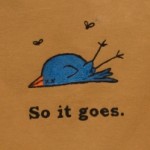Adding length to the front yoke when doing FBA in the cinema dress
-
7 years ago LINK
talialmi @talialmi
I got the cinema dress pattern and carefully reading the FBA instructions (as I have to do one 🙂
In the process of doing the fba, a length is added to the front side panel in two places – at the waist (stage 4) and at the curved front edge of the pattern piece (stage 5, when the dart is “closed), but a length is added to the front yoke only in one place and according the the drawing only to match the length added at stage 5. What about the lnegth added at stage 4? I know it sounds vague, makes more sense when looking at the instructions.
Thanks!
Tali7 years ago LINKmlinton @mlinton
I think you are right, you need to add length to the yoke piece to line up with the added length at the waist level on the side panel.
I think in step 4, where you add length, you want to slash higher than shown, anywhere between bust level and the notch that will line up with the bottom of the center yoke. Then you can add the same length to the yoke piece. This adds room for the bust and keeps your notches lined up.
7 years ago LINKtalialmi @talialmi
Thank you for the answer! I decided to add length in two places – once for the upper addition at the bust, at the front yoke, and once for added length at the waist line – I added at the front skirt – at the waist line as well. Notches should noe align. I think it’s a mistake in the instructions so maybe an errata should be published? This time attaching some pictures showing my question. Thank you! Will post a picture once the dress is made 🙂
7 years ago LINK Lightning McStitch
@LightningMcStitch
Lightning McStitch
@LightningMcStitch
Is it the circles on the second picture not lining up that has you worried?
Don’t forget that it’s at the stitched seam line, not the fabric edge, where they should line up. Whenever I get those slight discrepancies I try pinning the seam line at the notch point, matching the notches, and then work out from there and it usually works as the curve of the seam takes care of those little differences.Does that make sense?
Edited to add: I haven’t made this pattern yet and never need an FBA so my advice may be worthless 😉
7 years ago LINKmlinton @mlinton
Yes, I did it this way the first time I made this dress. I found lengthening the skirt instead of the yoke made this more empire length in the front, and the seam line between yoke & skirt in the front vs back didn’t align vertically when wearing the dress. (It actually worked out for a maternity dress.) If I make this again I will try lengthening higher up in the yoke.
7 years ago LINKtalialmi @talialmi
Thank you for our answers! mlinton what you wrote makes a lot of sense. I just cut the lengethened skirt but haven’t cut the yoke yet so I think I will follow your adive, lengthen the yoke and fix the skirt to be as the original piece. Thank you again! Learning from other women’s experience is amazing 🙂
7 years ago LINKtalialmi @talialmi
Shelly it was not the circles I was bothered about (was a little bothered but figured out I will be able to sort that out), it is this piece of added length at the waist that is a result of the FBA. It’s the first time I’m doing an FBA and from what I understand FBA is about adding volume, which results in length and width added, in this case to the front side panel piece. The added length has to be added to adjacent pattern pieces, and in the instructions on the one hand length is added in two places to the front side panel but only in one place at the yoke/skirt so my question was about that. Sounds complicated, I know…
5 years ago LINKT5 @Tami5
Pages 182 and 183 of The Palmer Pletsch Complete Guide to Fitting (2018) addresses this and directs you to add length to front yoke in two places.
You must be logged in to reply to this topic.
copyright
Unless otherwise credited, all work on this blog is © Liesl + Co., Inc, 2008-2025. You are welcome to link to this blog, but please ask permission before using any text or images.

